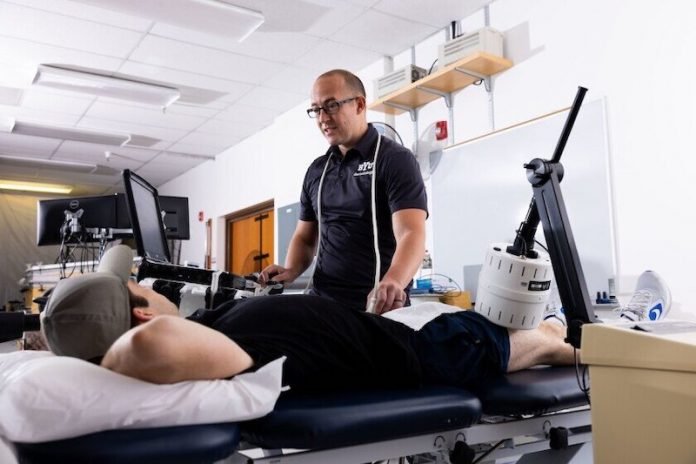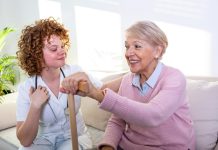
Research consistently shows that exercise is key to well-being in nearly every facet of life; its positive impact is unquestioned.
But what about when people, perhaps not by choice, need to sit on the sidelines for a while?
In a new study from Brigham Young University, researchers found new details about mitigating negative effects of inactivity by using passive heat therapy, a practice of heating muscles for treatment purposes.
They that this process practically eliminates a near 30% decline in artery health that happens when people, perhaps due to injury, become less physically active.
In essence, heat therapy preserves artery health for individuals with reduced physical activity as if they had continued exercising.
In the study, the team examined 21 healthy subjects who experienced disuse of lower limbs over 10 days.
Each study participant wore a movement-restricting knee brace, and half received daily 2-hour heat therapy on knee extensor muscles while the other half underwent a placebo treatment.
Both groups were closely monitored for differences in vascular health, a term used for blood vessel well-being.
The team used a technology called pulsed shortwave diathermy to conduct the passive heat therapy. These machines send out radio waves, which in turn heat the muscle.
With the heating machine resting on top of patients in the muscle area being treated, the process can be a bit time-consuming but doesn’t cause pain or discomfort.
By examining vascular health and the overall well-being of subjects’ arteries before and after the therapy, the team are equipped to raise awareness of something called endothelial function.
Extremely important for regulating the health of the cardiovascular system, it releases chemicals that control blood clotting, immune function and vascular relaxation.
With little physical activity comes decreased endothelial function, thus raising the risks of plaque buildup, blood clots, and heart attacks.
Detriments in endothelial function, like those seen with reduced physical activity, typically precede overt symptoms of cardiovascular disease by several years.
Fortunately, the endothelium appears to respond well to many treatments, like exercise and heat therapy.
These risks motivate the team to find ways to help those feeling helpless in their ability to be physically active.
The researchers plan to expand their work to examine other methods of heat-based treatment.
If you care about exercise, please read studies about how heart patients with diabetes can exercise more safely and findings of this fruit can help you recover quickly after exercise.
For more information about exercise and your health, please see recent studies about you can burn more calories with this exercise and results showing that how to prevent and treat high blood pressure with exercise.
The study is published in the Journal of Physiology. One author of the study is Jayson Gifford.
Copyright © 2021 Knowridge Science Report. All rights reserved.



